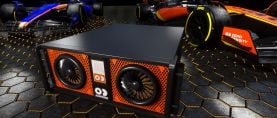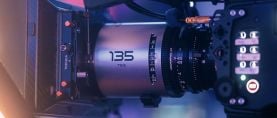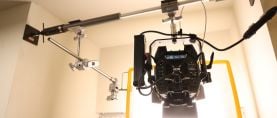
Samsung 360 Round Camera for VR
A first look at a flexible out-of-the-box 360-degree lens array with fast setup and plug-and-play networked live streaming.
A first look at a flexible out-of-the-box 4K 360-degree video solution with single-button setup and plug-and-play live streaming.
For those working with professional 360 degree and full VR video, the commercial quality Samsung 360 Round, first announced in October of 2017, is being offered as a compact, unibody livestream camera for productions needing reliable, affordable, and lowlight field units.
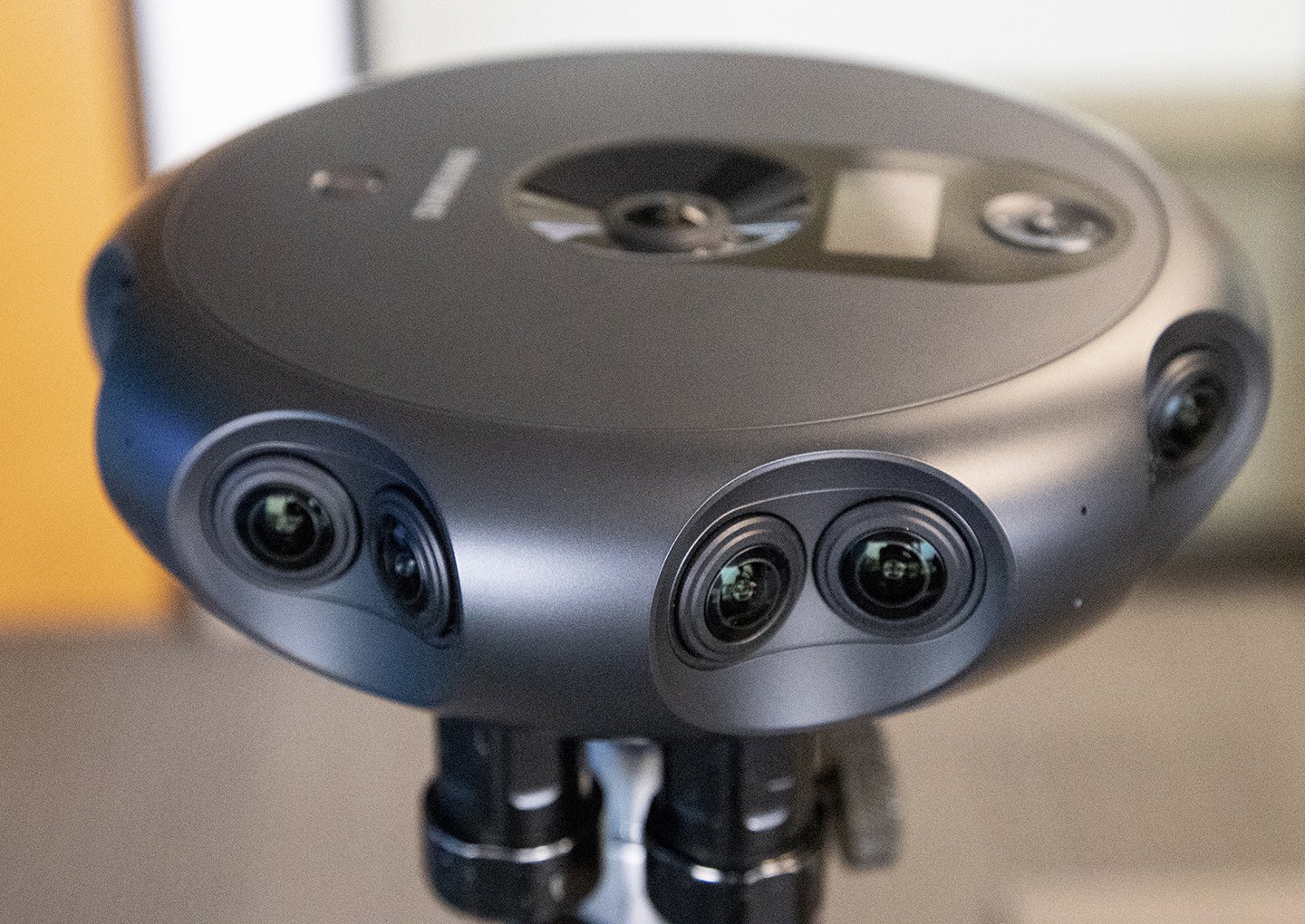
“The intent behind our design," responds Josh Dixon, Senior Product Manager of VR at Samsung, when asked about the genesis of the more advanced VR project, "is that we wanted people to be able to open it, and, out of the box, be able to hit the record button on top, start recording, hit it again to stop recording, and then they would be able to start using footage with post workflows.”
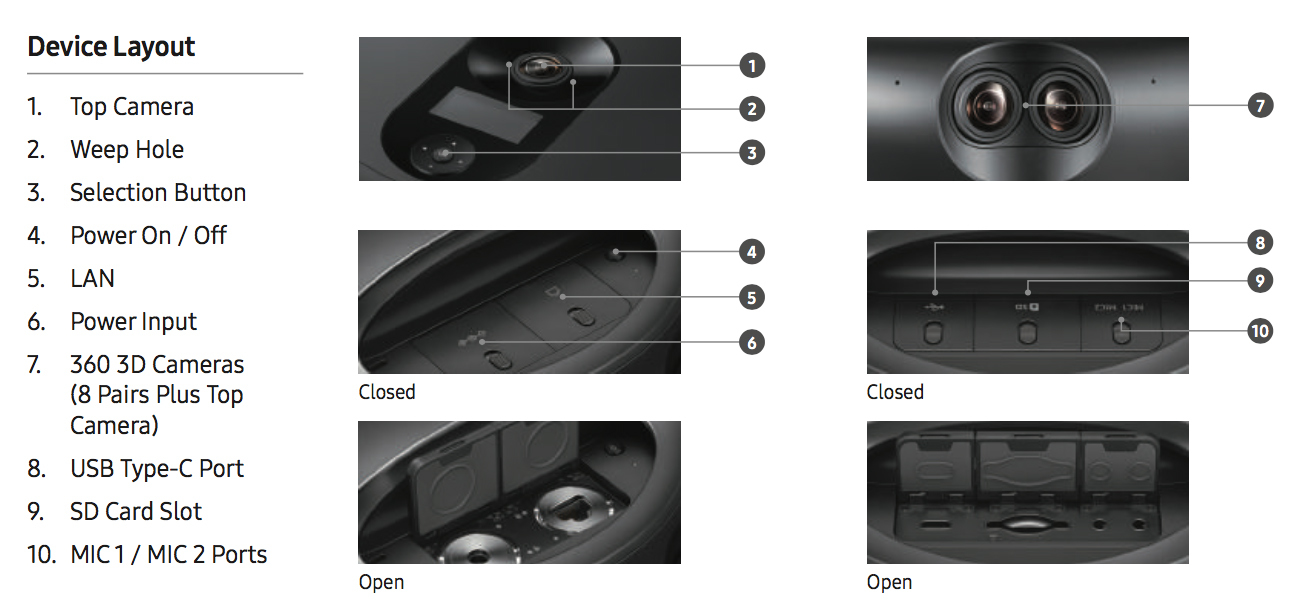
Samsung has been pushing the medium heavily. Just this last April, they gave several 360 Round cameras to a set of indpendent filmmakers and creatives to create content for Samsung’s VR Video’s Pilot Season.
In addition to the Samsung Gear VR head-mounted display, or HMD, which uses the Oculus mobile platform to run a Samsung Galaxy smartphone as a portable VR device, Samsung already offers the consumer oriented and lightweight Gear 360 4K handheld camera at $229.
At a starting list price of $10,499, with included Pelican transport case, the Samsung 360 Round is quite a bit more advanced. It's built for direct and optimized upload to popular 360 and VR venues, like Samsung's own platform, Samsung VR, as well as YouTube and Facebook.
Alongside a 17th optic, which points vertically from center, the single-piece aluminum chassis on the 360 Round holds 16 fixed f1.8 lenses in equidistant, horizontal pairs. At 3.5" interocular distance, Dixon notes that the pairs of “eyes” allow for better factory calibrations of depth mapping, and therefore more advanced software corrections and stitches for streaming and for post.
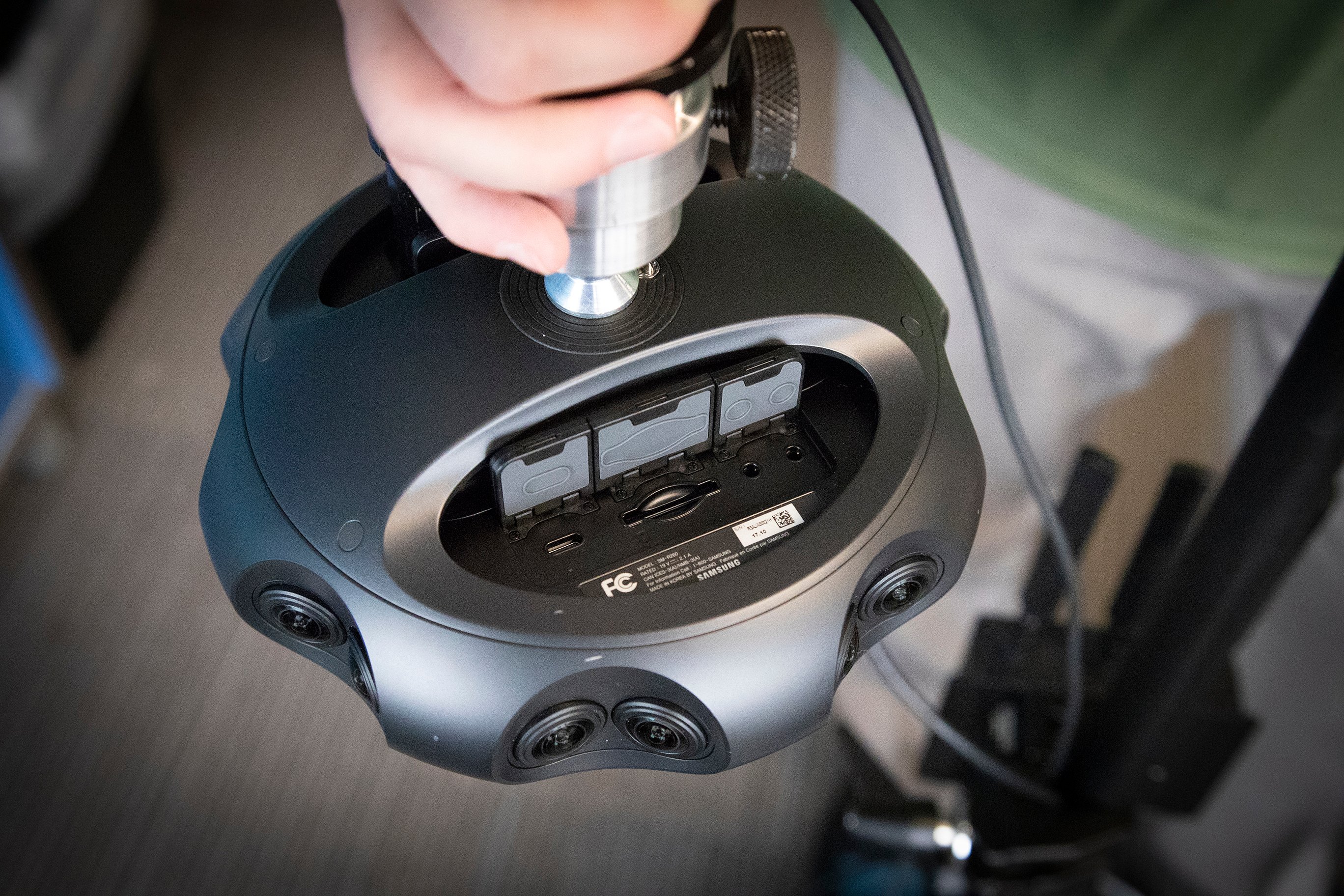
He says the placement closely approximates human perception while mitigating any disorienting negative parallax, the effect of object misalignments in the foreground or background. Claiming “True 4K x 4K,” the resolution is 4K (vertical) x 2K (horizontal), per “eye,” or 4K x 4K resolution in total thanks to 50 percent overlap between each lens on either side. That provides 100 percent leverage in stitching of footage.
With 360-degree capture on the horizontal axis, the vertical view is 350 degrees, a nearly spherical view without blind spots. There are also 2D rendering options, including repositioning of “camera” angles from 3D footage.
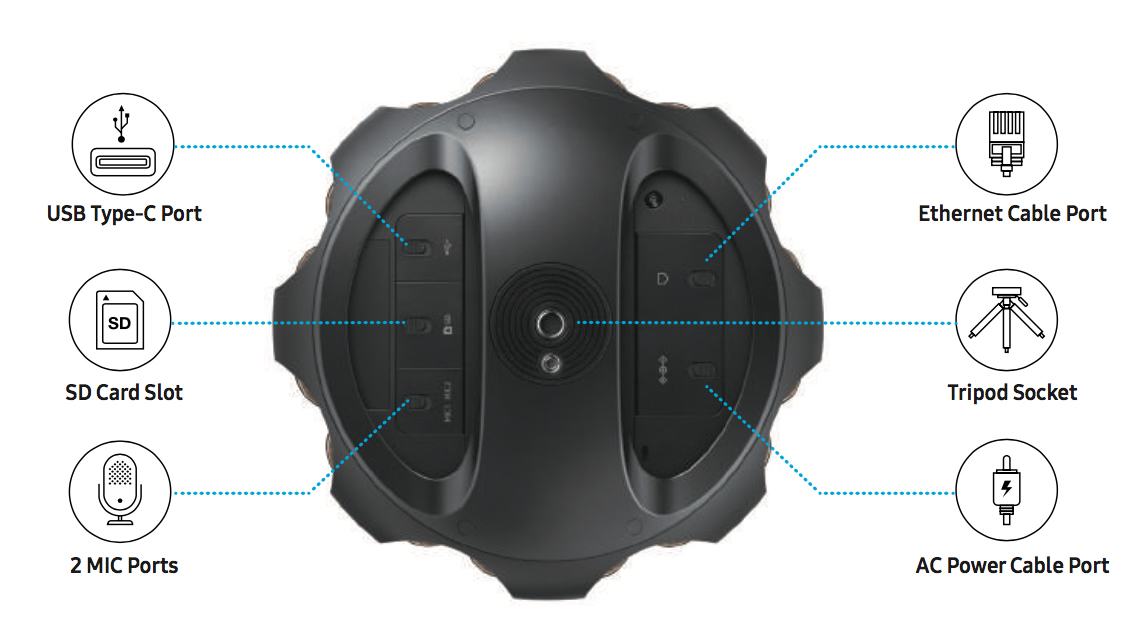
Capturing in 30fps, 2D video is automatically stitched to a 4096 x 2048 frame size for HMD media output. The full resolution 3D video can also maintain 4096 x 4096, per eye, for further editing and archiving. Each perfectly square sensor houses full 2K x 2K resolution, though Samsung has framed them for a 16x9 aspect ratio, to give further leverage in interstitial and post, and for engineering reasons.
“We had 800 pixels on the sensor, horizontally,” continues Dixon. “We've now opened it up to 1,000 pixels. We’re working on 1,200 pixels, to give you more overlap. But every time we open the overlap, that increases the heat, because now the sensor has more to process. So we have to work on efficiencies to help reduce heat to maintain the maximum 140-degrees in operational temperature.”
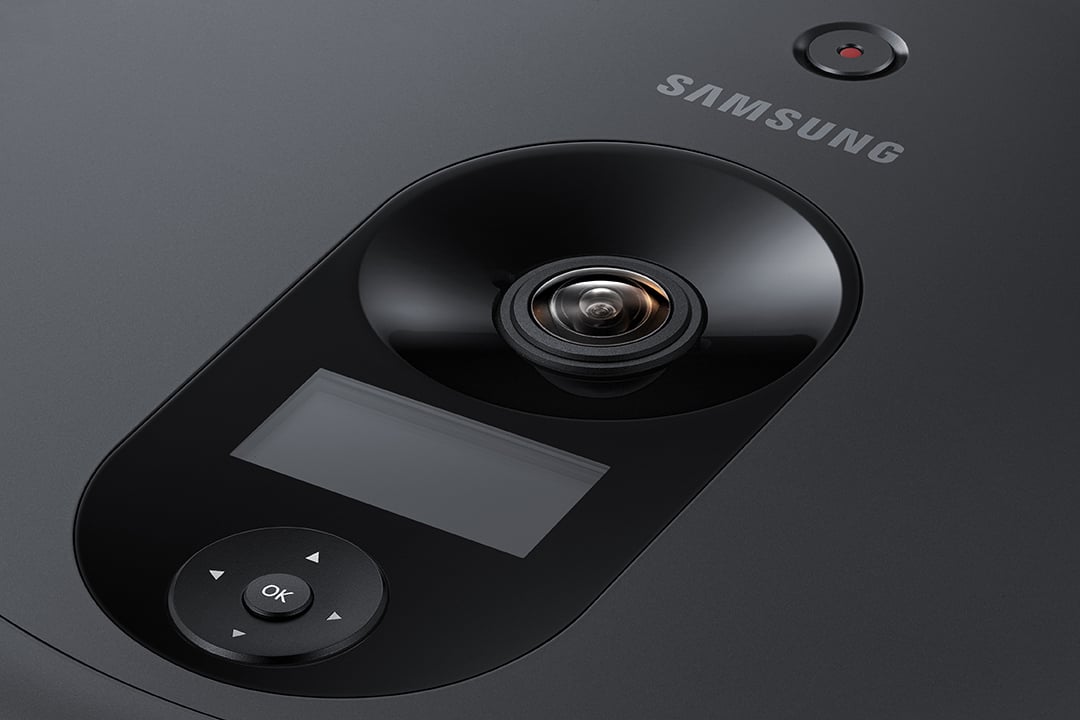
With a total of 16K resolution, that’s 8K of visual information for each eye. Employing five internal processors to manage the footage from seventeen 1/2.8", 2-megapixel rolling-shutter sensors, the 8.1" x 8.1" x 3.1" (205 x 205 x 76.8mm), 4.25lbs unibody camera has a proprietary passive cooling design that provides silent, fan-less running, 24/7.
“The difference is that we chose a different sensor,” Dixon says, pointing out that many other VR camera solutions cut off at 110ºF. “We've done a lot of testing on the sensor side and decided that ruggedization for outdoors with low light is what we want for our target customers. The other ones may offer 8K at 120fps, but they lack these other features.”

“Most of the cameras in the market today have chosen Sony sensors. It's a decision as to whether you go for resolution and frame rate, or you go with heat and low light, as in ours. The 360 Round has 11.7-stops (70dB) of dynamic range, where other sensors only have 10 stops, and than there are even others with only 8 stops. So it depends on whether you want to film in low light, or if you're okay with just 10 stops or 8 stops. We wanted to get as close as possible to 12 stops.”
The 360 Round is rated at IP65, which must prove protection from total dust ingress and a water-resistance to a consistent stream of low-pressure water jets. (An additional waterproof kit for the AC power and any LAN connection will be required.) There are draining “weep” holes so that water does not accumulate or cause condensation internally.

"We have operated this in Korea, 365-days-a-year, outdoors, live streaming, and it has never shut down,” he smiles. Operational at down to 0°F degrees, it can be set and left. Beyond the desert, there are few situations that will require a continuous operational temp of 140°F.
Instead, Dixon says that it has been created that way to keep the camera from overheating in direct sunlight, especially useful for concert and live events coverage. There are difficulties in shading for a camera that can see in an almost complete sphere.
Samsung has largely seen early adoption from sports and consumer brands looking to gain additional revenue from websites or promotional materials. Dixon has seen virtual reality tours being created, for example, of sports centers, control rooms and retail experiences.

Operating worldwide from 12 to 19 volts, the power supply runs 100-240 VAC at 50-60 Hz. External batteries in Gold and V-Lock mounts will provide nonstop, hot-swappable operation for continuous remote operation.
WiFi gives access to controls, and Dixon says that they have been testing the 360 Round on the latest 5G cell services, which has enough bandwidth to support live streaming of both video and audio. (Samsung says the 5G system is expected to offer an average 1-Gbps data rate with peak rates of 6 Gbps for high mobility devices, and up to 50 Gbps with low mobility devices.)
At full res, a single SD card at 256GB will provide roughly an hour-and-forty mintues of footage for all seventeen cameras. Supporting up to 2TB external drives, larger capacities are available via SSD through the USB-C connection. There is 40GB of internal storage for immediate startup and live stream without capture.
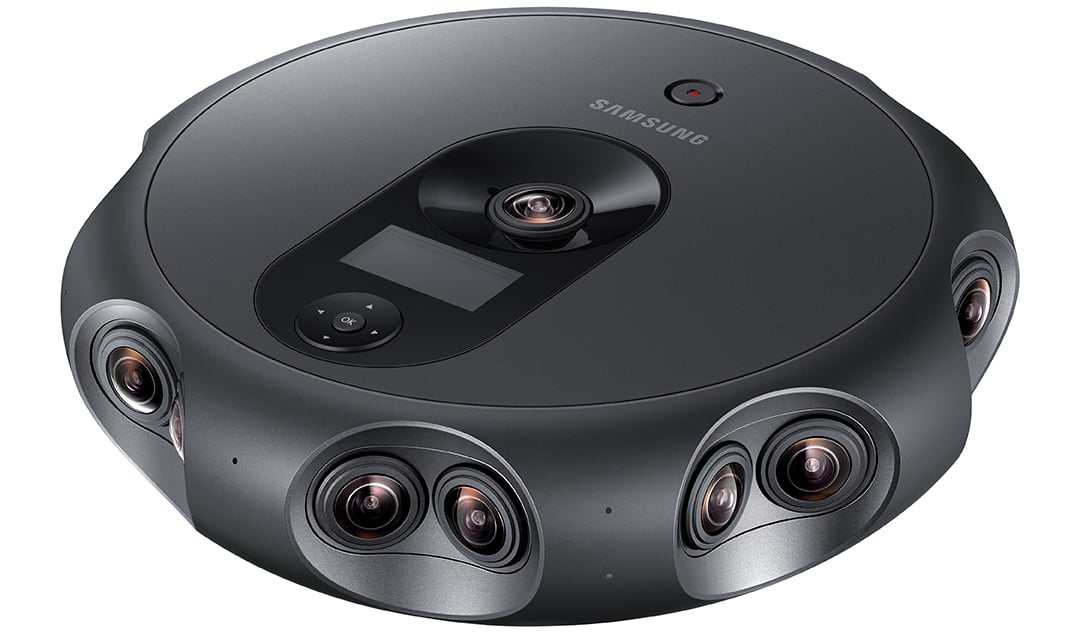
For live streaming or continuous events coverage, wired LAN setup is provided through RJ45 Ethernet connection with IP65-rated sealing. Average latency is as low as 1.7 seconds during a live stream, with onboard encoding to MP4 in H.264, or its successor, HEVC, High Efficiency Video Coding, also called H.265.
Supporting two channels for stereo plus 5.1-channel surround sound, six internal microphones capture spatial audio files that are packaged with the video through the two SDI ports to add feeds to multiple camera setups or broadcast equipment.
Timecode for each sensor and frame is provided for 3D syncing. Two additional mic ports automatically encode audio from external microphones or audio systems into the 5.1-channel system seamlessly.
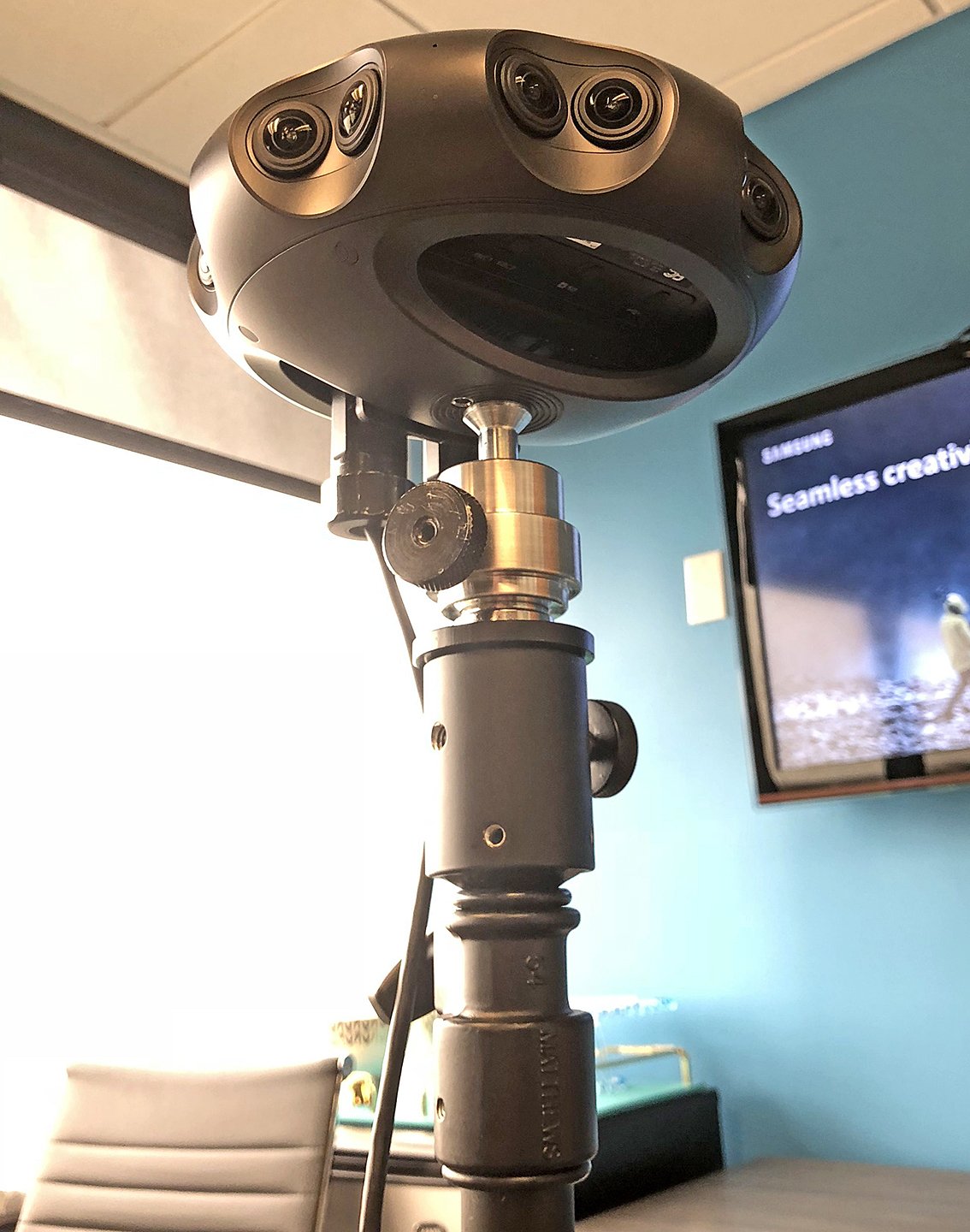
“At 200 Mbps bit rate, video is sent to the PC for live streaming to decode it, stitch it, do the depth map estimates, and then re-encode, to send out through wireless,” he explains. Compatible with 4K capture cards, both SDI must be used to capture the full 8K: 4K in left-eye and 4K in right-eye. “Everything captures in a single file with audio. It's 17 images, for 17 video files in .mp4, and one uncompressed audio, in PCM, with one metadata file for your depth map data."
"It takes all that, and creates a single-file-mp4. If I want to send it out through SDI, I don't have to encode it, and I can send it out to a capture device. In the capture device, I could encode with a lossless codec, or ProRes, or whatever other codec I want to use. So even though our software only supports H.264 or H.265 for native encoding, we can also support any codec through the SDI outputs.”
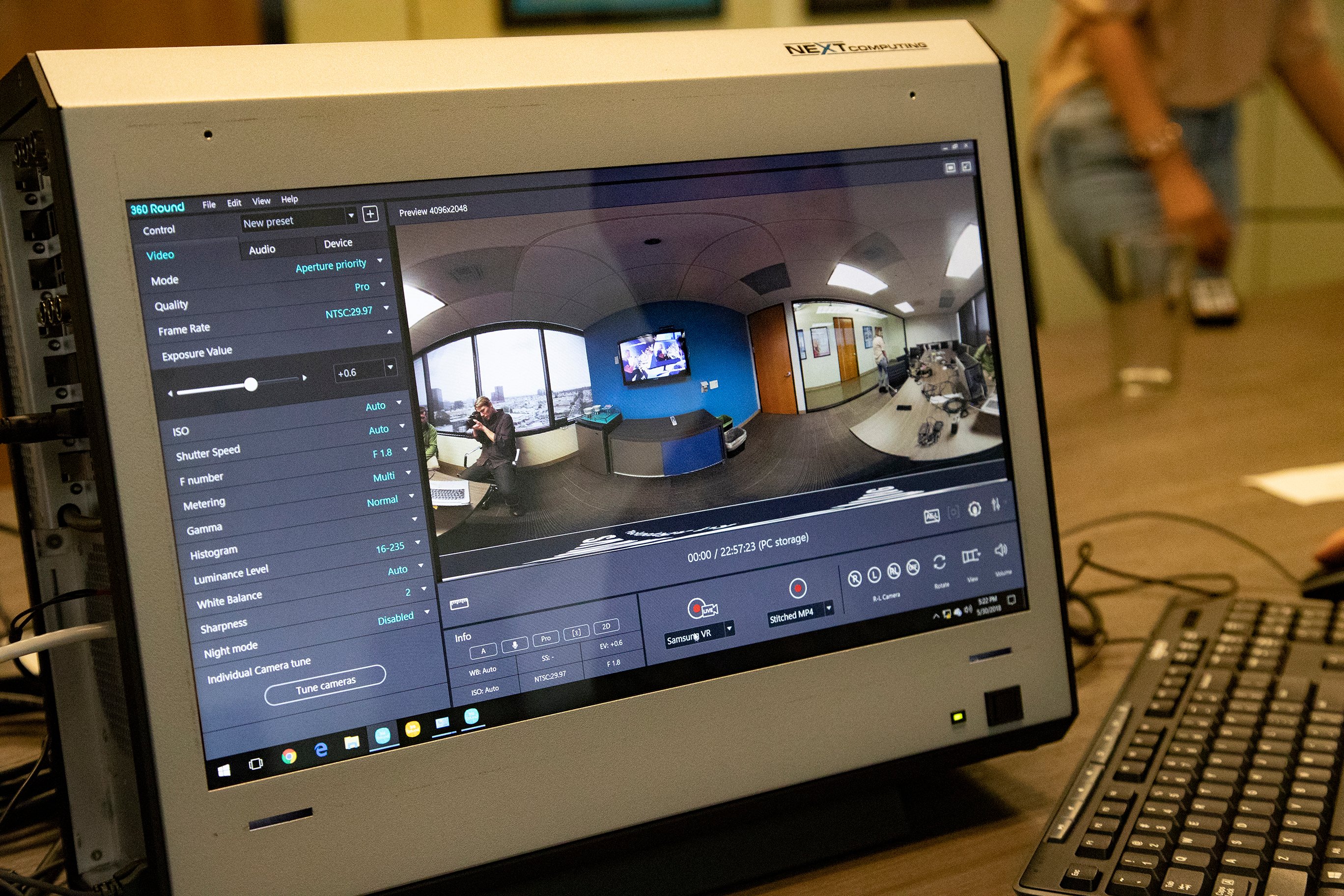
With real-time calibration of stitch lines, coloring tools, and exposure corrections for live streaming or for post, Dixon says the 360 Round Controller and 360 Round Viewer interfaces, also free for download, were designed to address several feature sets they felt were lacking in previous 3D and VR software, like 3D stitching, optical alignment, and factory calibration for cameras and stereoscopics.
“That’s the intent behind the software, to get people going right away. Turn on the camera, plug it in, open your application, hit start, and then you're streaming. You can still make adjustments, but some you'll see only once you’ve begun encoding. It also locks you out from making some of the adjustments.”
With individual controls over each color channel, a histogram is provided via the software for exposure values. If ambient lighting is changing, there is an Auto ISO mode. Each sensor can be tuned individually for settings like noise reduction, contrast, and sharpness through the multi-cam interface. There are individual or synchronized controls over each set of left and right “eyes.” Night mode employs a physical IR filter on the sensors.
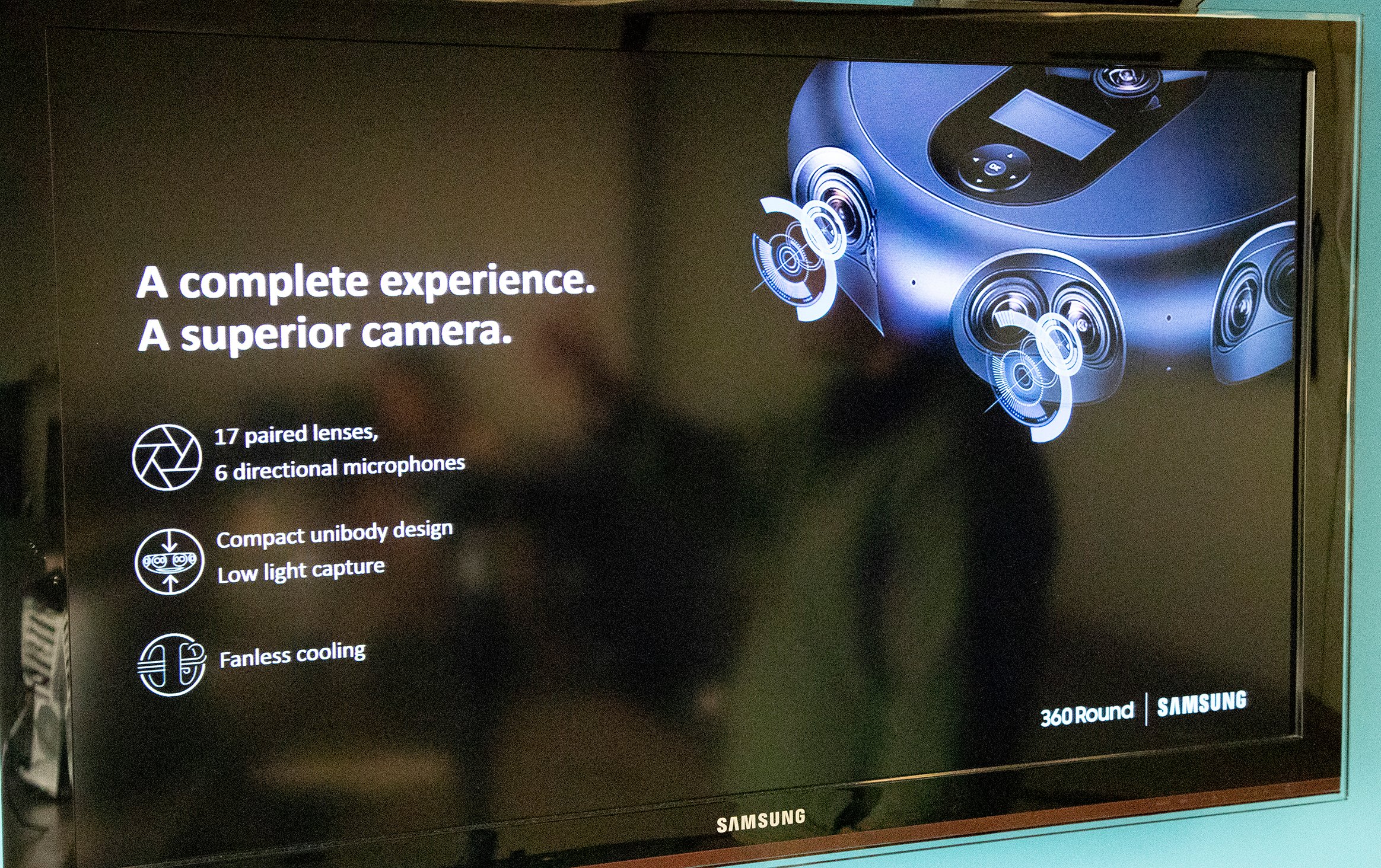
Internally, the camera uses algorithms with interpolation intervals and stabilization system that talks with gyroscope and accelerometer tracking yaw, roll and pitch to eliminate micro-vibrations from the picture. These may not be perceptible in the footage, but they can cause motion sickness in VR and 360 headsets.
Six-degrees-of-freedom is an imminent feature that Dixon explains will give further controls over any negative parallax by using depth map information for an extra range of correction forward, backward, upward and downward. Previous parallax corrections have been based on a single-axis. Live video can also be viewed on mobile devices using the 360 Live Preview app. He promises roughly every three months on maintenance and firmware updates.

There are already peripheral solutions for the Samsung Round. Dixon says a UK company has already rigged a couple beta drones. Matthews Studio Equipment worked with Samsung during testing for the camera, and they have released the Matthews VRig. Customized with small footprint, flexible mounting, low center of gravity, and “ruggedized” for matching IP65 rating to accommodate extended shooting in extreme enviornments, the camera stand comes with weather reistant skirt and hard case, which also acts as a single protective shipping enclosure.
Currently, the Samsung 360 Round is available from Samsung with free trial. A guide to 360 video production has also been prepared by the company for users new to the world of VR and 360.
In addition to B&H, there are a number of national and international sellers and renters supporting the system, including AbelCine in Burbank and Radiant Images in Los Angeles. For more on the burgenoning field in video, check out our site visit with Radiant Images and founder Michael Mansouri who discusses several specialized VR and 360 solutions that address advanced needs like higher frame rates.
Follow Samsung on Facebook, Instagram and Twitter.
Stay up to date with American Cinematographer on Facebook, Instagram and Twitter.
